Probe blasts off on 12-year, 4-billion-mile journey to unlock secrets of ancient asteroids
NASA coverage: Lucy's early morning launch
Here's the view from NASA TV as an Atlas V rocket blasted 'Lucy' into space.
CAPE CANAVERAL, Fla. - NASA’s ‘Lucy’ probe lifted off from Florida early Saturday, the first step on a 12-year mission that will send the spacecraft zig-zagging across the solar system on a hunt for clues about the formation of our planets.
It was just after 5:30 a.m. when the Atlas V rocket blasted off from Cape Canaveral, ducking in and out of low clouds dotting the Space Coast as it roared toward space and, eventually, the Trojan asteroids up to 530 million miles away.
The probe will loop around the Earth two separate times as it slingshots toward the orbit of Jupiter, where it will pass several of the ancient asteroids after warming up by studying a main belt asteroid. It will swing back around Earth again in 2030 for one more gravity assist, then return to the second group of Trojans.
Over the course of 12 years, Lucy will cover nearly 4 billion miles.
What are the Trojan asteroids and why do we care?
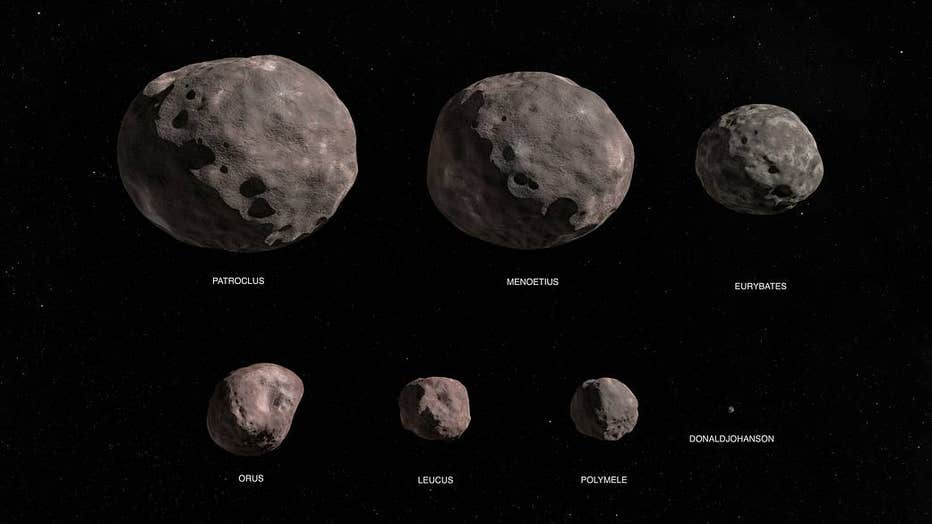
This illustration is of the Lucy mission's seven targets: the binary asteroid Patroclus/Menoetius, Eurybates, Orus, Leucus, Polymele, and the main belt asteroid DonaldJohanson. (NASA/Goddard Space Flight Center Conceptual Image Lab)
The term "Trojan asteroids" – called that because they have traditionally been named from Greek mythology after figures of the Trojan War – refers to two clusters of small bodies that circle the sun in Jupiter’s orbit, balanced by the gravitational forces of Jupiter and the sun, but are not close to the gas giant itself.
Scientists believe they are leftover raw materials from the formation of the solar system’s giant planets – which include Jupiter along with Saturn, Uranus, and Neptune – over 4.5 billion years ago
"Trojan asteroids have witnessed first-hand the history of the outer solar system," mission manager Sherry Jennings explained. "These primitive bodies hold vital clues to deciphering the history of the solar system."
Though the asteroids appear similar, scientists believe minor differences in their appearance suggest the small bodies are made of different materials, have different histories, or both. That will be one of the things Lucy is investigating.
What’s onboard Lucy?
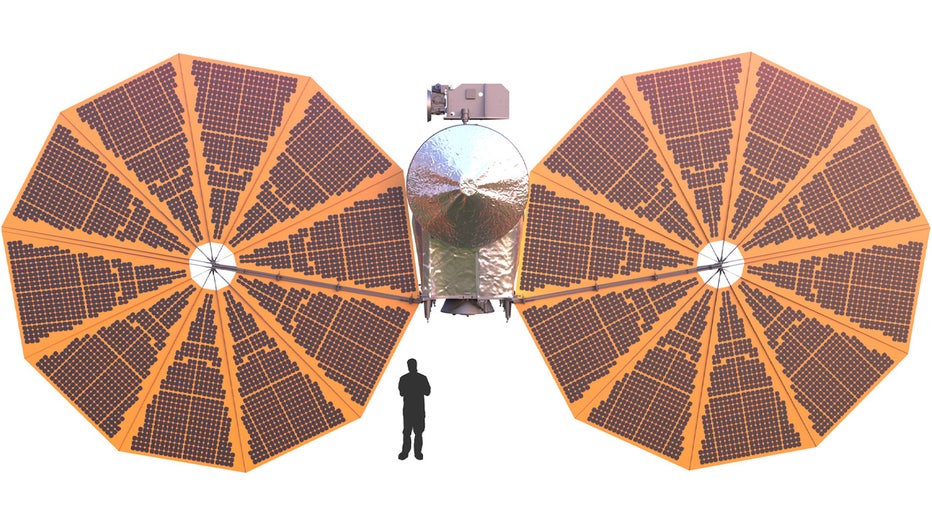
Lucy will be over 52 feet from tip to tip, but most of that is the huge solar panels, each close to 24 feet, in diameter. (NASA image)
The Lucy LOng Range Reconnaissance Imager, (L’LORRI), is Lucy’s most sensitive and highest resolution camera, tasked with taking high-resolution photos of the Trojans, despite the relatively low light.
The "L’Ralph" sensor will search the Trojan asteroids’ surfaces for organic compounds, ices, and hydrated minerals, and its images will help determine the Trojans’ surface compositions.
The Lucy Thermal Emission Spectrometer (L’TES) detects infrared radiation, acting like a remote thermometer. By studying how quickly the asteroids’ surfaces heat up or cool down, scientists can learn more about what they are made of.
Lucy launch: Time-lapse shows Atlas V roar through clouds
A time-lapse view of Lucy's launch, followed by a real-time view -- complete with engine roar.
Lucy intends to pass within 600 miles of each targeted asteroid to properly utilize its sensors.
"Every one of those flybys needs to be near-perfection," said NASA's chief of science missions, Thomas Zurbuchen.
Aside from the scientific sensors, the spacecraft also has navigation and communication equipment, along with giant solar panels. The 24-foot-diameter arrays will allow Lucy to travel farther from the sun than any other solar-powered spacecraft to date.
Why is it called Lucy?
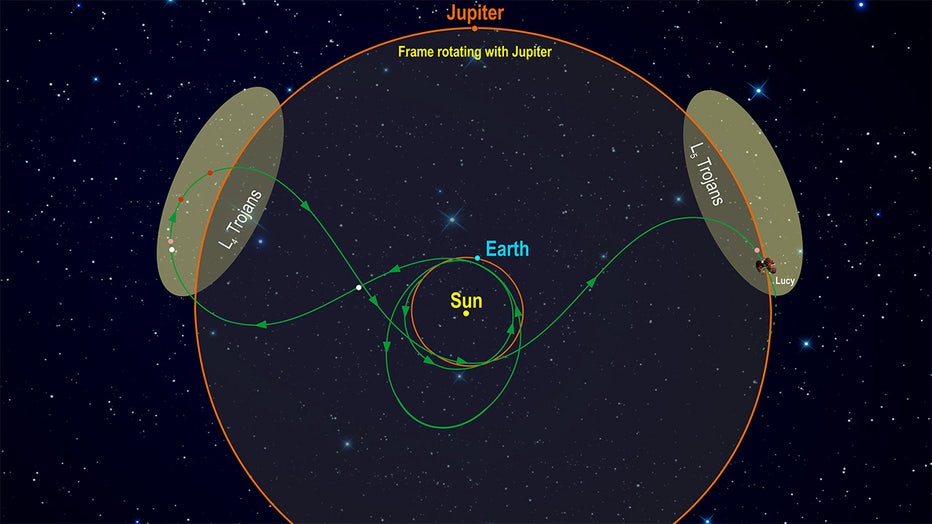
This diagram illustrates Lucy's orbital path (Southwest Research Institute via NASA)
Unlike so many NASA missions, "Lucy" is not an acronym. The spacecraft is named after the fossilized remains of an early human ancestor discovered in Ethiopia in 1974; the 3.2-million-year-old female got her name from the 1967 Beatles song "Lucy in the Sky with Diamonds."
"The Lucy fossil really transformed our understanding of human evolution, and that’s what we want to do is transform our understanding of solar system evolution by looking at all these different objects," said Southwest Research Institute’s Cathy Olkin, the deputy principal scientist who proposed the spacecraft's name.
One of its science instruments actually has a disc of lab-grown diamond, totaling 6.7 carats.
And there’s another connection to the Fab Four. A plaque attached to the spacecraft includes lines from songs they wrote, along with quotes from other luminaries. Among those is a line from a John Lennon single: "We all shine on…like the moon and the stars and the sun."
RELATED: NASA's Lucy spacecraft first of several upcoming asteroid missions
Launch photos
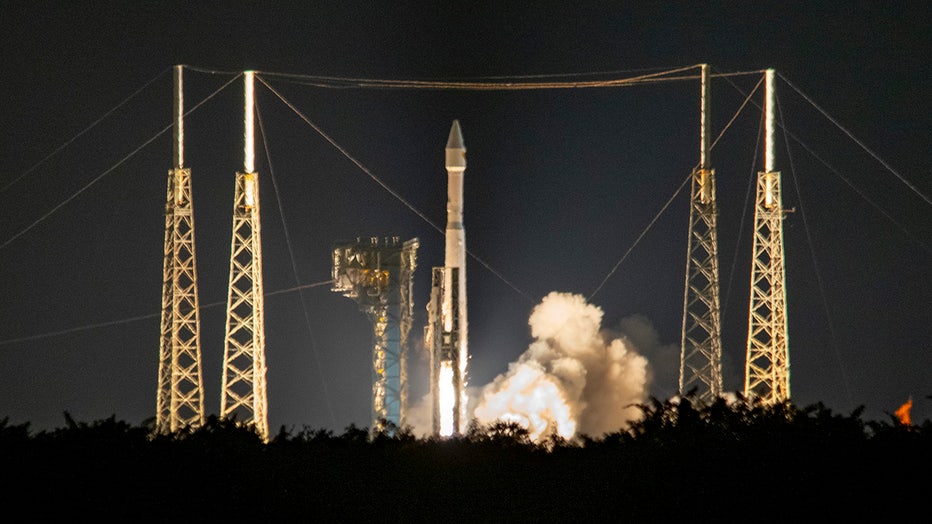
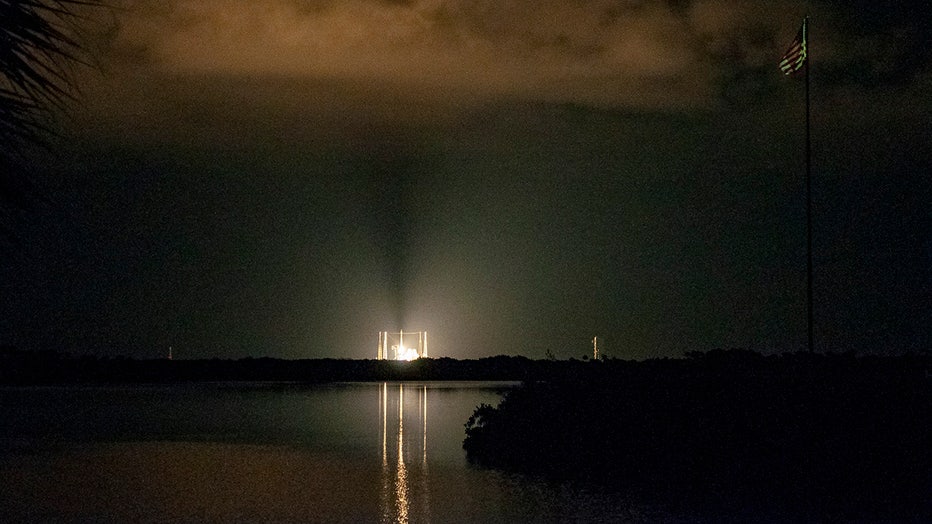
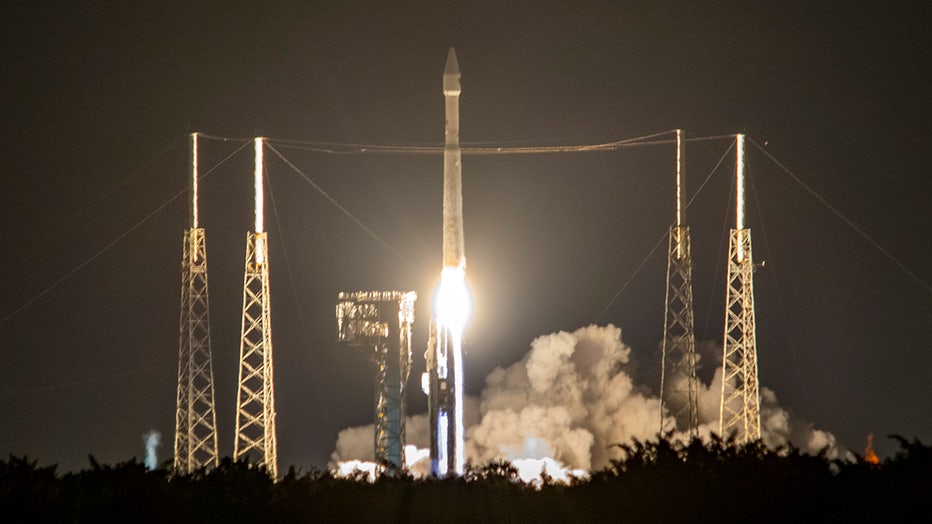
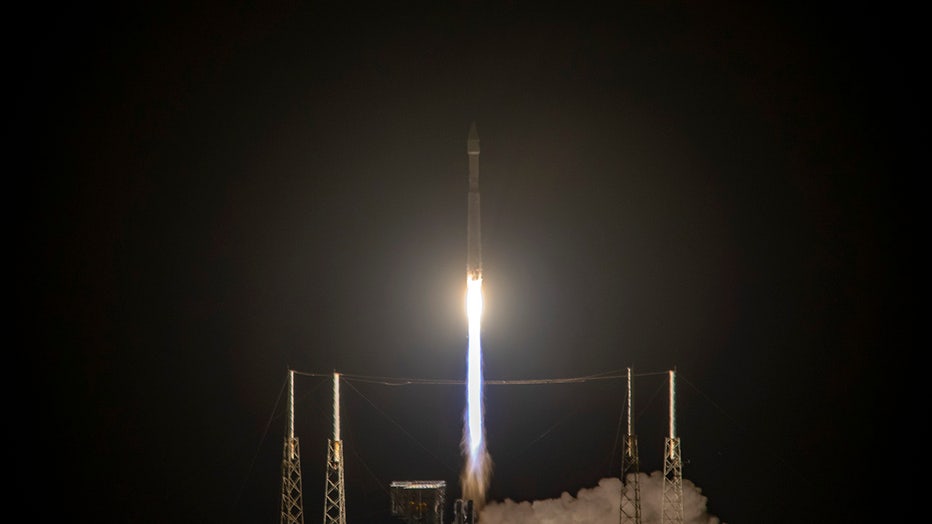
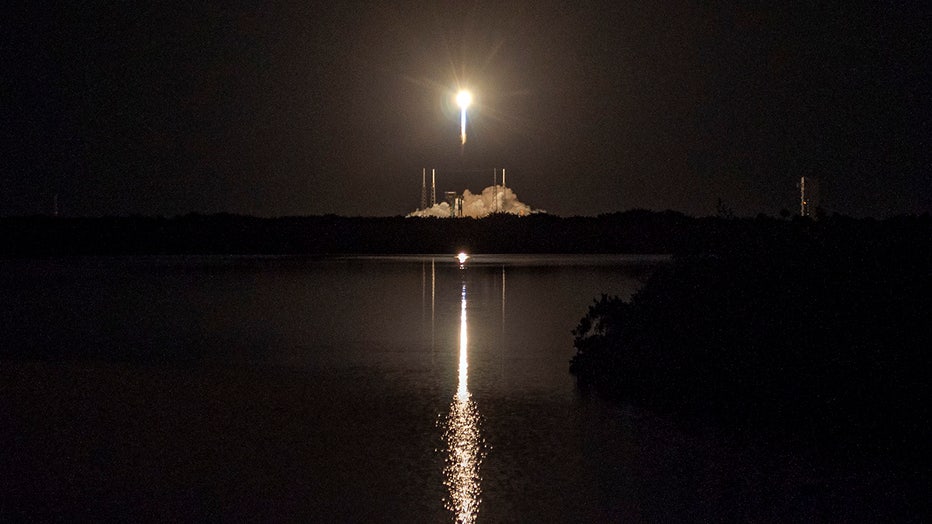
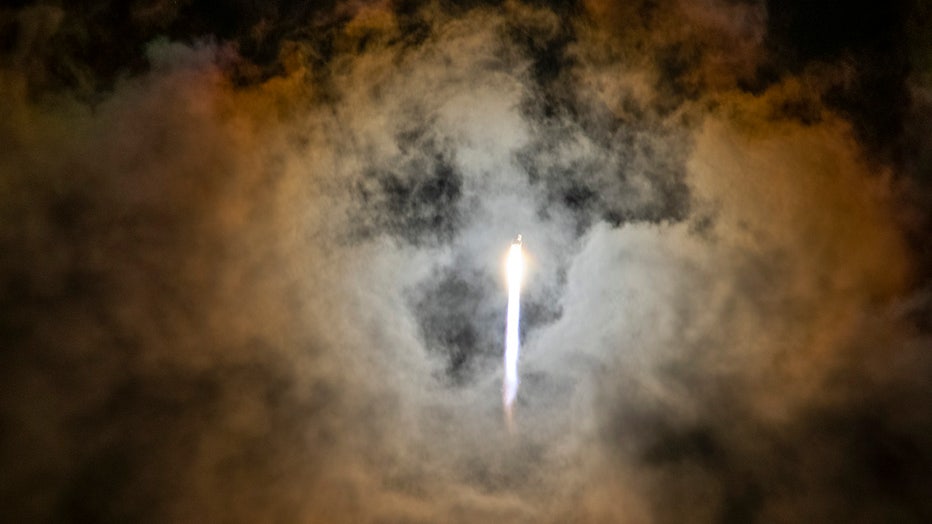
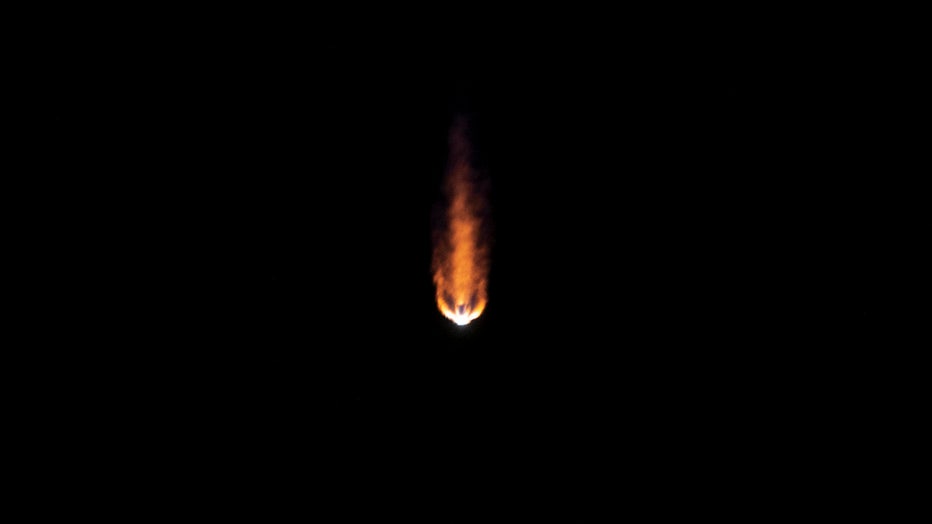
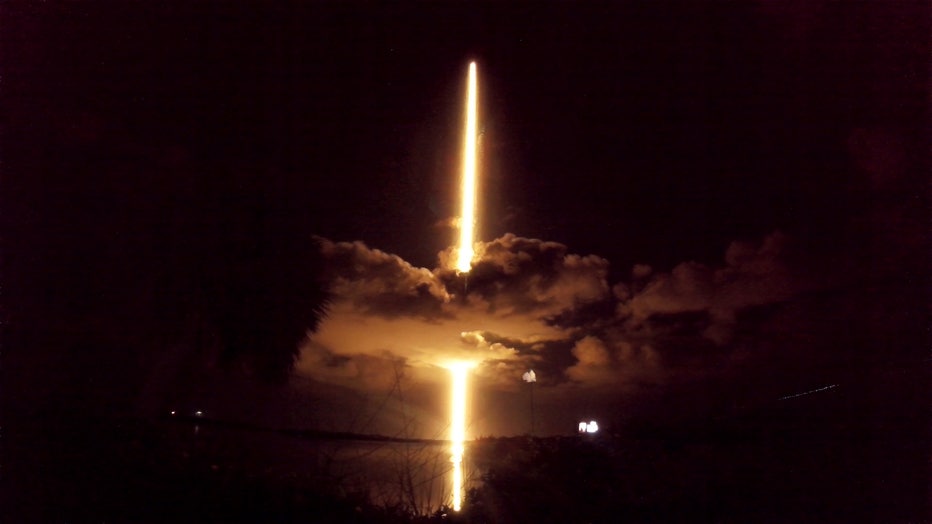
Composite time-lapse image
Information from the Associated Press was used in this report.

